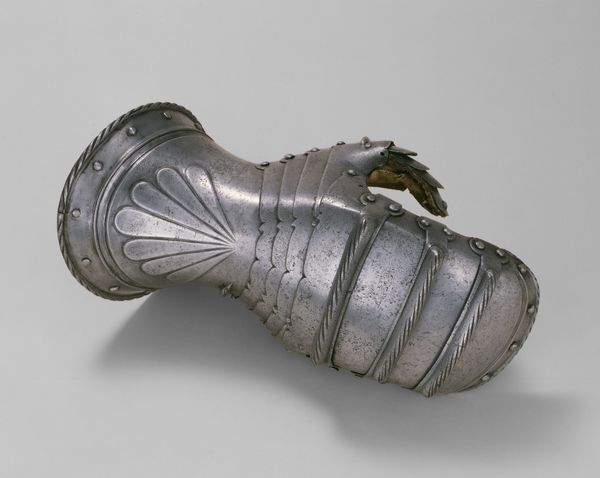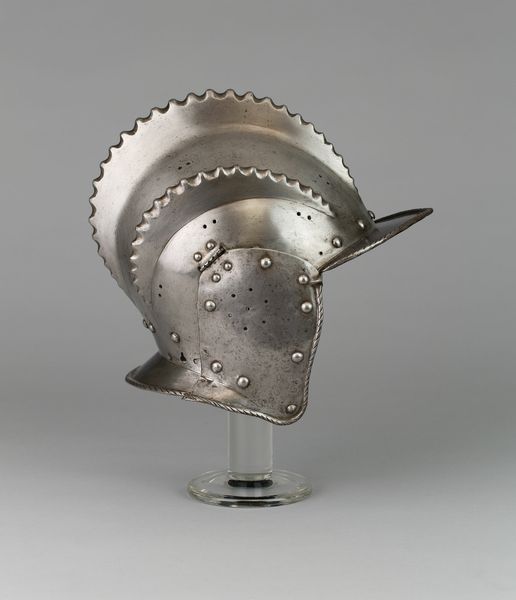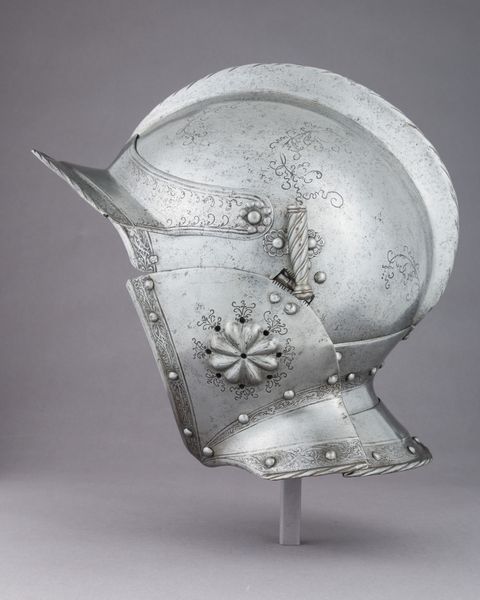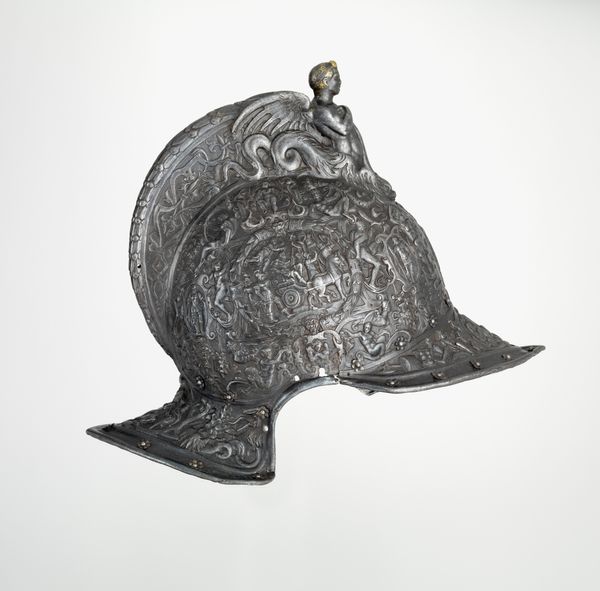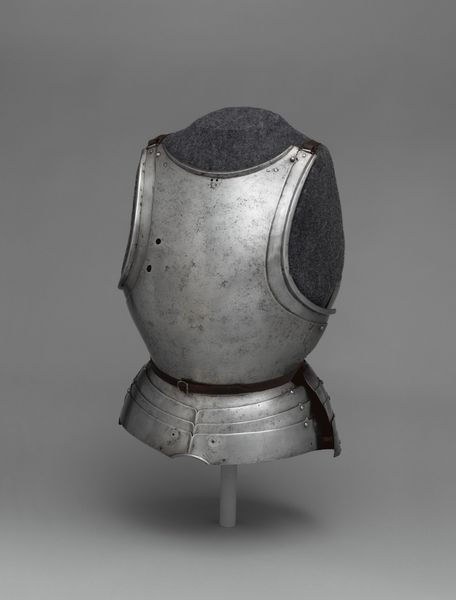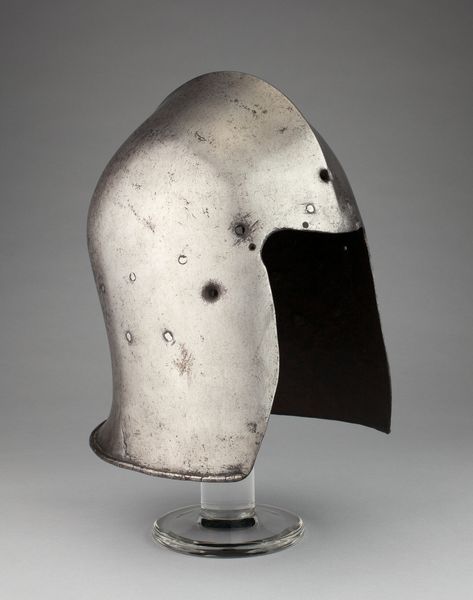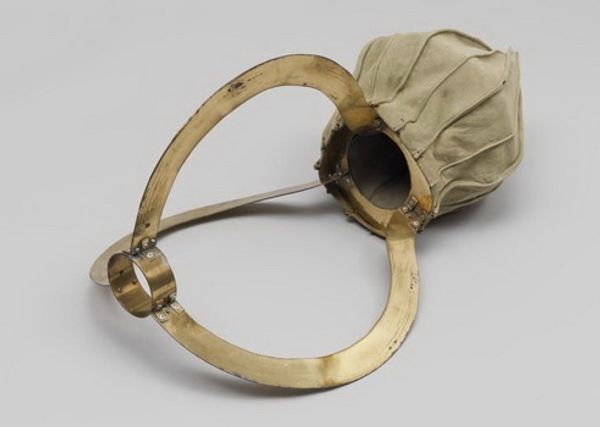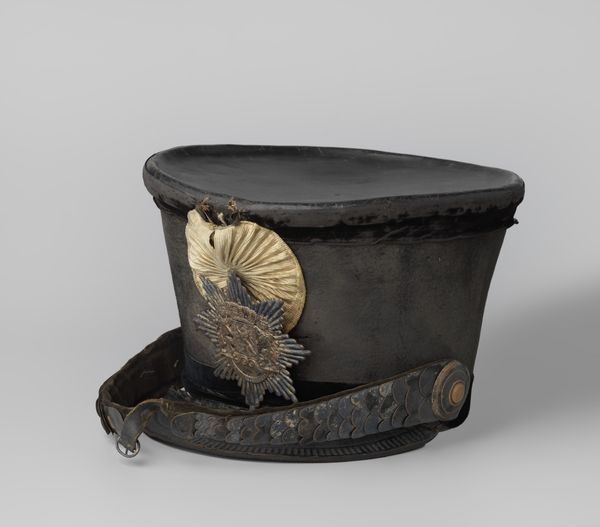
Peytral from a horse armor of Georg von Wolframsdorf c. 1480
0:00
0:00
metal, sculpture
#
medieval
#
metal
#
sculpture
#
sculpture
#
horse
#
armor
Dimensions: L. 66 cm (26 in.) Weight: 8 lbs.
Copyright: Public Domain
Curator: Before us is the Peytral from a horse armor of Georg von Wolframsdorf, dating back to approximately 1480. It now resides here at The Art Institute of Chicago. Editor: My first impression is how sculptural it is. The curves and the reflective surface are almost sensual, despite being cold, hard metal. Curator: Absolutely. Note the careful articulation of the metal. The various plates are riveted together creating a visually appealing segmented form, reinforcing the horse's anatomy through representation rather than mere protection. The design follows a logical organization. Editor: That’s fascinating. I'm thinking about the workshop that produced this. The sheer labor, the repetition of hammering, shaping… this wasn’t just function; it was a highly skilled craft, wasn’t it? And for whom? Georg von Wolframsdorf, you said? Curator: Indeed. The patron was likely of noble lineage, the craftsmanship pointing to commissioned work befitting aristocratic display. Notice the subtle etched lines, which add another layer of complexity and refinement. The overall structure serves a protective function for the animal during mounted combat but clearly transcends that singular aim. Editor: So it's as much about status and power as about warfare. The materiality really underscores that for me; the gleaming metal intended to intimidate, perhaps. I imagine the societal impact—the blacksmith’s status, the value of the raw materials, the resources required... Curator: Yes, the gleaming effect, while aesthetically pleasing, also highlights the craftsmanship. There's a delicate balance between pragmatism and artistry here. Each form relates organically to another through careful planning. Consider the subtle visual cues employed, leading the eye through each junction. Editor: Looking closely, the repetitive joining of the plates appears so tedious. To consider hours involved gives this artwork another meaning that transcends noble bravado. I mean, this connects to so many tiers of Medieval labor. Curator: Ultimately, its semiotic purpose elevates function above bare utility, doesn’t it? Editor: Perhaps… but let’s not disregard the societal circumstances implicit in production, nor the class distinctions emphasized by such expenditure. Anyway, what a wonderfully constructed object to behold! Curator: Indeed, it highlights the nuanced approaches present in late Medieval artistic and technological endeavors.
Comments
No comments
Be the first to comment and join the conversation on the ultimate creative platform.

